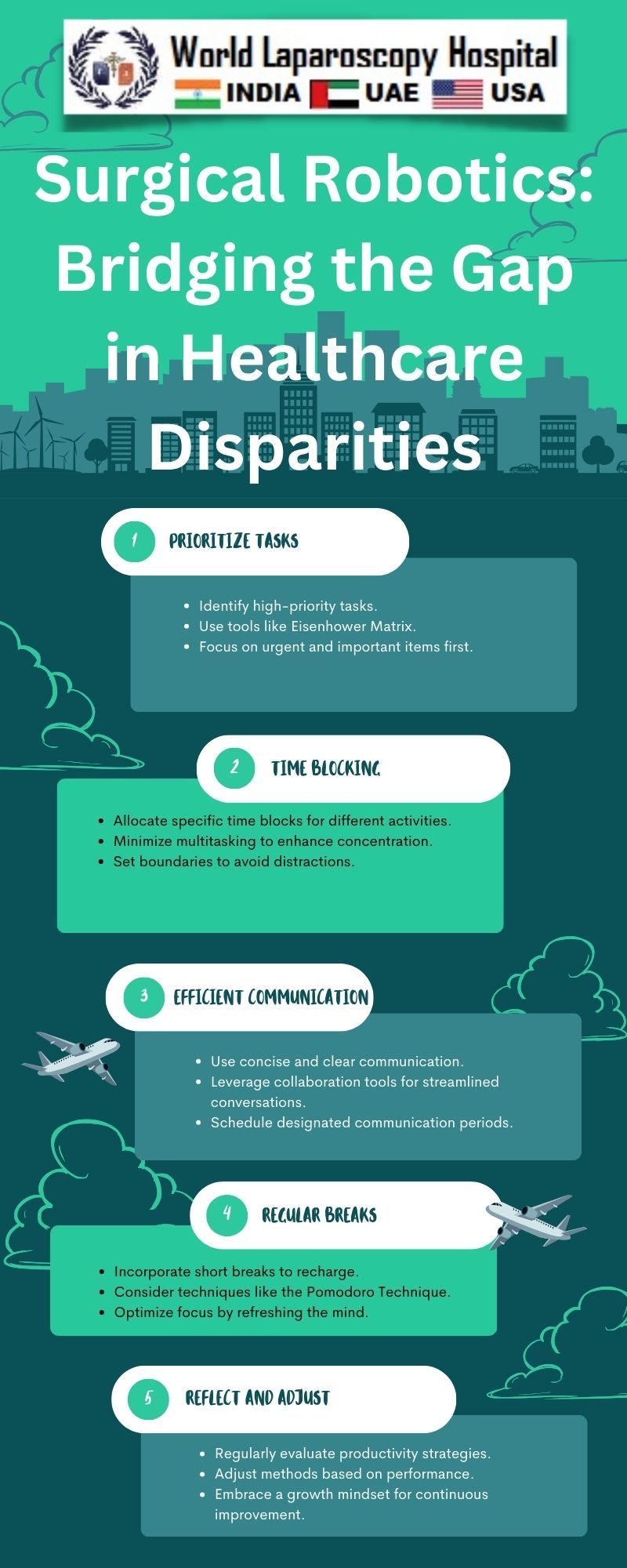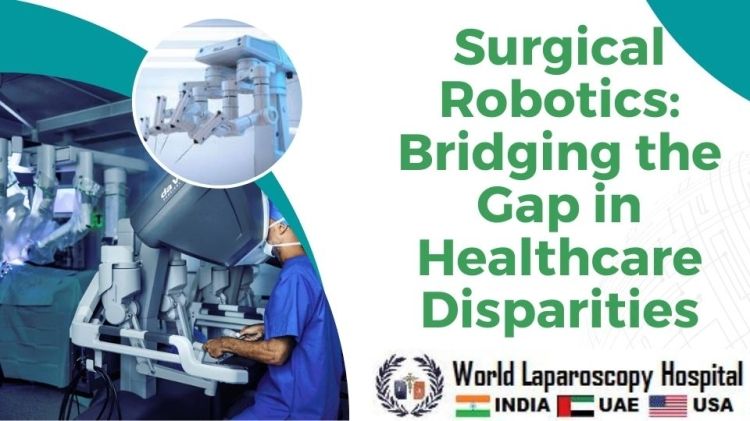Surgical Robotics: Bridging the Gap in Healthcare Disparities
Introduction:
In the rapidly evolving landscape of healthcare, technological advancements play a pivotal role in transforming the way medical interventions are conducted. One such groundbreaking innovation is surgical robotics, a field that has emerged as a powerful tool in bridging healthcare disparities. This article explores the multifaceted impact of surgical robotics on healthcare, focusing on its ability to enhance accessibility, improve outcomes, and contribute to a more equitable distribution of medical resources.

Before delving into the role of surgical robotics, it is crucial to understand the existing healthcare disparities that persist globally. Disparities in healthcare access, quality, and outcomes are prevalent, with factors such as geographical location, socio-economic status, and technological accessibility influencing the level of care individuals receive. These disparities contribute to inequalities in health outcomes, limiting the ability of certain populations to access advanced medical treatments.
The Rise of Surgical Robotics:Surgical robotics represents a paradigm shift in the way surgeries are performed. It involves the use of robotic systems to assist surgeons in performing precise, minimally invasive procedures. The da Vinci Surgical System, a pioneering example, allows surgeons to control robotic arms with enhanced dexterity and precision, facilitating complex surgeries with smaller incisions. This technology has significantly expanded the scope of what is possible in the operating room.
Enhancing Accessibility:One of the primary contributions of surgical robotics to healthcare is its ability to enhance accessibility to advanced surgical procedures. Traditionally, patients in remote or underserved areas faced challenges in accessing specialized medical care due to geographical constraints. Surgical robotics allows expert surgeons to remotely perform procedures, breaking down geographical barriers and bringing specialized healthcare to distant locations.
Tele-surgery, enabled by surgical robotics, enables a surgeon to operate on a patient located in a different geographical area. This has profound implications for areas with limited access to specialized medical expertise. In emergency situations or when immediate intervention is required, tele-surgery can be a life-saving option, particularly in regions lacking well-established medical facilities.
Minimally Invasive Surgery and Reduced Recovery Times:Surgical robotics facilitates minimally invasive surgery, a significant departure from traditional open surgeries. Minimally invasive procedures involve smaller incisions, reducing trauma to the patient's body and accelerating the recovery process. The precision offered by robotic systems allows for greater accuracy in performing intricate tasks, minimizing the risk of complications and postoperative pain.
Quicker recovery times mean patients can return to their normal lives sooner, reducing the economic and social burden associated with prolonged hospital stays. This aspect of surgical robotics is particularly advantageous for individuals with limited resources who may struggle with extended periods away from work or caregiving responsibilities.
Precision and Improved Outcomes:The precision and accuracy afforded by surgical robotics contribute to improved surgical outcomes. Robotic systems provide surgeons with a magnified, three-dimensional view of the surgical site, allowing for meticulous control and enhanced decision-making. The high level of precision reduces the likelihood of errors and complications during surgery.
Furthermore, the use of robotics in surgery enables procedures that were once deemed too risky or complex to be undertaken. Conditions that traditionally required open surgery can now be addressed with minimally invasive techniques, expanding the range of treatable medical conditions. This expanded scope of surgeries ensures that a broader spectrum of patients can benefit from advanced medical interventions.
Equity in Healthcare Delivery:Surgical robotics plays a pivotal role in promoting equity in healthcare delivery. By leveraging technology to connect expert surgeons with patients in remote or underserved areas, disparities in access to specialized medical care are mitigated. This technology-driven approach ensures that individuals, regardless of their geographical location, have the opportunity to receive cutting-edge medical treatments.
Moreover, surgical robotics reduces the dependence on the availability of highly skilled surgeons in specific locations. Through tele-surgery, expertise can be shared globally, allowing patients in regions with a shortage of specialized medical professionals to benefit from the knowledge and skills of experts located elsewhere.
Challenges and Considerations:While surgical robotics offers immense potential, it is essential to acknowledge and address the challenges associated with its implementation. The cost of acquiring and maintaining robotic systems can be a barrier for some healthcare institutions. Additionally, the need for specialized training for surgeons to operate these systems and concerns related to patient safety and data security require careful consideration.
Ensuring that the benefits of surgical robotics are equitably distributed across diverse populations requires strategic planning, investment in training programs, and a commitment to ethical considerations. Collaborative efforts between technology developers, healthcare institutions, and policymakers are essential to navigate these challenges and maximize the positive impact of surgical robotics.
Future Prospects and Innovations:The field of surgical robotics continues to evolve, with ongoing research and innovations aimed at further improving its capabilities. Future developments may include advancements in artificial intelligence, enabling autonomous robotic surgery and real-time decision support for surgeons. Additionally, efforts are underway to make robotic systems more cost-effective and accessible to a broader range of healthcare settings.
As technology continues to advance, the integration of surgical robotics into routine medical practice holds the potential to redefine the standard of care across various surgical specialties. From cardiac and orthopedic surgeries to gynecological and urological procedures, the application of robotic systems is expanding, offering new possibilities for patient care.
Conclusion:
Surgical robotics stands at the forefront of healthcare innovation, offering a transformative solution to address disparities in access to advanced medical treatments. By enhancing accessibility, facilitating minimally invasive surgery, and improving surgical outcomes, robotic systems contribute to a more equitable distribution of healthcare resources. As we navigate the challenges associated with implementing this technology, the potential for positive impact on global health remains substantial, promising a future where cutting-edge medical interventions are accessible to all.






